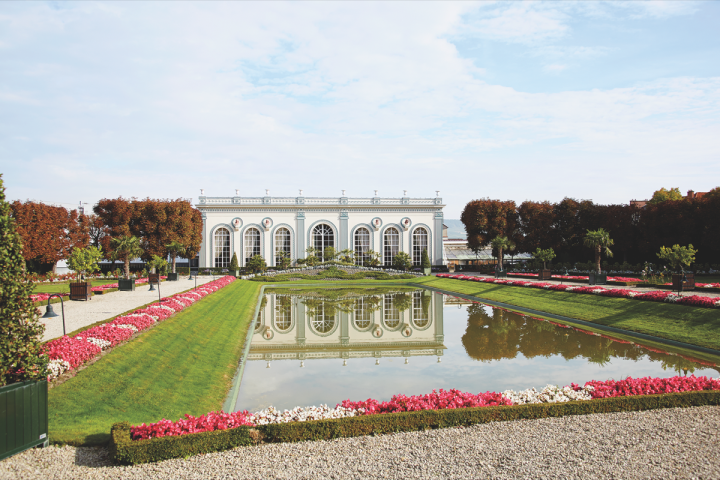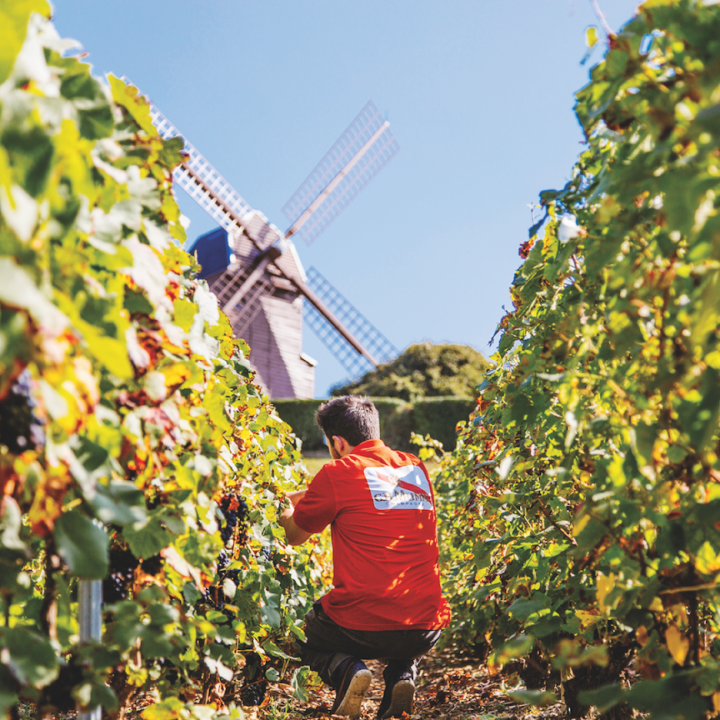
Guests at the three-unit Pappas Bros. Steakhouse in Dallas and Houston are very interested in bubbles these days, according to master sommelier Jack Mason. The alumnus of New York City’s Altamarea Group and Union Square Hospitality Group adds that Champagne still represents the pinnacle in sparkling wine—and it’s the sparkler his guests want most.
Darren Scott, general manager and sommelier at Red Room Lounge and Estate Wine Brokers in Austin, Texas, notes that “Champagne is becoming more of a regular indulgence for my guests as opposed to something consumed for special occasions.”
Such trends bode well for the Champagne category, which has surged in recent years after a sharp falloff following the 2008 economic crisis. That period began a worrisome time for Champagne producers and importers, as depletions slumped from 1.59 million cases in 2007 down to 1.34 million cases in 2008 and 1.17 million cases in 2010, according to Impact Databank. But then Champagne began a rocky climb back up the volume ladder, and the category has shown solid growth in recent years. Champagne depletions last year advanced 5 percent to 1.44 million cases.
“We see a bright future for Champagne in the U.S. market, thanks to a large number of new entrants, sparkling consumers who upgrade to Champagne and an overall increase in consumption occasions,” says Aygline Pechdo, brand director for Champagne and sparkling wines at Pernod Ricard USA.

Gateway To Champagne
Marketers, retailers and restaurateurs alike say Champagne is thriving despite some rising prices and stiff competition from Prosecco and other lower-priced sparkling wines. Rodney Williams, chief marketing officer for Moët Hennessy USA, says Prosecco’s vibrancy is actually paving the way for Champagne’s expansion. “Consumers are developing a great appetite for bubbles,” Williams explains. “It’s interesting to note the success of Prosecco. One could look at that as a massive challenge, but we see it as a great opportunity. More consumers are being introduced to bubbles, and our job is to trade them up to our storied Champagne brands based on superior wine quality, flavor profiles and range.”
To Cedric Martin, owner of the four-unit Martin Wine Cellar in New Orleans, Prosecco’s current success bodes well for the future of Champagne. He says most millennial consumers in his store have yet to incorporate Champagne into their drinking repertoires. “They have to start someplace, so they begin with Cavas and Proseccos and then move up,” he says. “As they mature and have a bit more disposable income, they’ll work their way up to Champagne.”
The enthusiasm for Champagne comes despite significant price increases taken by many brands. Martin Sinkoff, vice president and director of marketing at Frederick Wildman & Sons, says the industry has successfully established those price points, beginning with the entry-level labels. “The days of $20 Champagne or even $25 Champagne are gone,” Sinkoff says. “Consumers have adjusted in a number of categories to higher price points, and $50 for a bottle of Champagne is now considered a relative value. It’s a bit on the high end, but value pricing for major brands is somewhere around $40.”
Pechdo of Pernod Ricard says there are solid reasons behind the price spikes for many brands. “As global demand continues to grow and with Champagne supply being limited by its very nature, prices have naturally risen across all ranges,” she explains. “In order to maintain the highest quality, Champagne houses have also put more money into getting top-quality grapes, modernizing production facilities and ensuring excellence from hand-harvesting to storing and shipping. All of those investments have contributed to the additional cost.”
But the upward price adjustments can indeed encounter resistance. Terlato Wines began importing Piper-Heidsieck, the U.S. market’s sixth-ranked Champagne brand, in 2015. Shortly thereafter, the company started repositioning the brand, boosting the price over an 18-month period. The result is a suggested retail price of about $43 today compared to $34 two years ago.
Terlato Wines CEO Bill Terlato says his company received “a lot of pushback,” but was able to maintain volume due to a 35-percent increase in distribution. “We feel Piper-Heidsieck is a healthier business overall, with a larger base accepting the price,” he says. Terlato’s goal is to push Piper-Heidsieck up a few notches to the No.-3 position in the category. “We don’t want to be the guys that are discounting in order to make their volumes,” he adds.
Of course, pricing is relative. Greg Majors, beverage director for San Diego–based Blue Bridge Hospitality, sees massive Champagne demand at the company’s Grape Smuggler wine shop. “Champagne is very accessible in terms of its price point,” he says. “When you compare Champagne to Burgundy or Bordeaux, it’s far more attractive—and customers are responding.” Martin of Martin Wine Cellar adds that Champagne prices were edging higher a while ago, but many brands have since scaled back a bit. “The Champagnes under $40 are selling very well,” he says.

Expanded Occasions
Because of its relatively high pricing, however, it’s unlikely that Champagne will ever be a daily or even weekly drink for most consumers. “It’s easy to say Champagne isn’t only for major celebrations, but for everyday celebrations as well,” says Wildman’s Sinkoff. “But price does enter into it. The reality is that you’re not going to a three-star Michelin restaurant every night of the week either. That’s what Champagne is—a Michelin-starred experience.”
Moët Hennessy USA is trying to push the boundaries a bit. “We see an opportunity to make Champagne more relevant on an everyday basis,” Williams says. “Even though Champagne is still very dependent on holidays and special events like birthdays and weddings, Americans are recognizing that it can be enjoyed beyond celebratory moments.”
For its Veuve Clicquot brand, Moët Hennessy recently launched a campaign with three lifestyle advertising spots. “We hope to connote sophistication, style and the idea that Champagne in general, and Veuve Clicquot in particular, has a role to play in everyday life,” Williams says. The company is also promoting the idea of enjoying Champagne in wine glasses rather than flutes, “a practice that signals it’s more appropriate for everyday consumption,” he adds.
Nicolas Feuillatte, imported by Ste. Michelle Wine Estates, is also promoting more everyday consumption of Champagne with food, while still preserving a luxury image. An on-premise push called “Champagne Gourmand” has restaurants and wine bars offering a glass of Nicolas Feuillatte paired with three small appetizers or desserts. “In the on-premise, we’re facing very aggressive pricing, especially by the glass,” Feuillatte managing director Julie Campos told Shanken News Daily recently. “We don’t want to be involved in this vicious cycle, which is harmful for both Nicolas Feuillatte and the category.”

Some sommeliers are expanding Champagne’s impact by promoting it as a food-pairing wine. “People are finding a new place for Champagne—a rightful place—with eating and not just celebrating,” Mason says, noting that the Pappas Bros. wine staff actively promotes Champagne consumption with chilled seafood and fried food dishes. The restaurant’s best-selling brand is Chartogne-Taillet Cuvée St. Anne Brut, selling for $21 to $22 a glass or $105 a 750-ml. Scott of Red Room Lounge says consumption occasion expansion is due partly to the fact that “Champagne has become a darling of the sommelier community, so the wine is now used as a pairing with food on tasting menus across the country.”
And sometimes the definition of an “occasion” can be stretched a bit. Tatiana Konovalov, assistant food and beverage manager at The Biltmore Four Seasons hotel in Santa Barbara, California, says Champagne still connotes celebrations, but more than just birthdays and anniversaries. “People are ordering bottles of Champagne on a casual Saturday afternoon as sort of a mini-celebration,” she notes. The Biltmore carries eight Champagnes by the glass, with Nicolas Feuillate Brut at $24 ($100 a 750-ml.) and the 2006 Dom Pérignon at $40 ($375 a 750-ml.) in high demand.
One key, of course, is to be diversified with a broad range. Champagne Ayala, which is handled in the U.S. market by Vintus, offers a portfolio ranging in price from $55 to $175 at retail, which includes the core Brut Majeur ($55) and Chardonnay-centric Rosé Majeur ($70), as well as Brut Nature ($63), a non-dosage expression cellar-aged for nearly four years. Higher up the ladder is Ayala’s Blanc de Blancs Vintage ($110), and at the top is Perle d’Ayala Vintage ($175) a vintage expression from top grand
cru vineyards.

New Labels, New Brands
Increasing Champagne consumption and expanding usage occasions have prompted some new activity in the sector. Moët & Chandon now offers Moët Ice Impérial ($59 a 750-ml. ), a Champagne developed specifically to be poured over ice, and is launching a rosé offshoot ($60) this summer. “It’s ideal for outdoor spring and summer venues, and it’s flying off the shelves,” Williams says. Sister brand Veuve Clicquot is also playing in that sector with Veuve Clicquot Rich, which is “crafted with a higher dosage level and consumed with ice,” Williams explains, adding that the brand has strong momentum.
Meanwhile, some producers are focusing attention on their higher-end entrants as they seek to capitalize on a consumer willingness to trade up. Terlato notes that Piper-Heidsieck’s Rare Brut and Rare Rosé labels outpaced the rest of the line in 2016, resulting in an improved mix.
Grower Champagnes represent another avenue of growth for the sector. While volume of grower Champagnes—denoted with the letters RM for récoltant-manipulant, which means the wines are made by the grower—is tiny compared to the overall market, consumption is expanding rapidly.
The rise of lesser-known labels plays into the millennial penchant for exploration. “Younger drinkers are less brand-loyal and more adventurous,” Terlato says. “They have a thirst for knowledge, they want to try unique offerings and learn something new.”
Martin of Martin Wine Cellar sells a lot of grower Champagne these days. “The category is a hand-sell, but it’s something different,” he says, noting that most offerings retail for above $50 a 750-ml. “Consumers are always interested in trying something different.” Majors of Blue Bridge Hospitality is also keen on grower Champagnes, noting that he actively encourages exploration among his staff and customers. “I’ve gained greater confidence in our ability to sell because of the quality of the growers,” he says.